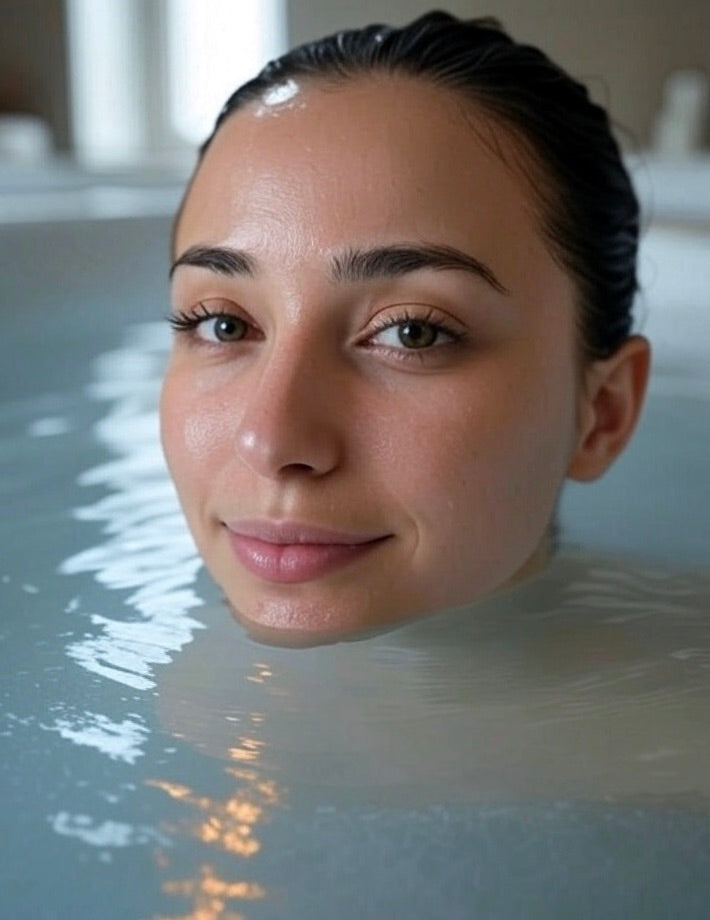Ever tried cranking your shower to icy blast and wondered if you’d unlocked the powers of a Cold Plunge or Ice Bath Tub? Short answer: it’s not quite the same. But don’t dash for the Cold Plunge Tub just yet—keep reading to learn why, and how both cold exposure techniques can boost your body and mind.
2. Cold Shower vs. Cold Plunge: Understanding the Core Differences

2.1 Temperature and Duration: The Defining Factors
2.1.1 Typical Temperature Ranges and Exposure Times for Cold Showers
Cold showers usually range from 10–15°C.
Most people tolerate them for 2–5 minutes.
They feel invigorating, but the water warms as it flows.
This limits how cold you actually get over time.
Shorter bursts of cold still trigger beneficial stress responses, though.
2.1.2 The Colder, Longer Immersion of Cold Plunges
Cold Plunge Tubs and Ice Baths typically stay between 4–10°C.
This is far colder than a standard shower.
Immersion often lasts 3–10 minutes, fully submerging the body.
Longer exposure drives a deeper drop in skin and core temperature.
That intensity is harder to replicate in the shower.
2.2 Immersion Level and Physiological Impact
2.2.1 Partial vs. Full Body Coverage: The Vagus Nerve and Skin Temperature Drop
Cold showers hit only part of your body at once.
This partial contact lessens the cold shock.
In a plunge, full coverage activates the vagus nerve strongly.
This can lower your heart rate and increase relaxation.
Skin temperature also drops more uniformly in an immersion.
2.2.2 Intensity of "Cold Shock" Response and Cellular Adaptations
The initial gasp reflex is more intense in a plunge.
That strong cold shock drives adaptive processes in your cells.
Repeated exposure may boost resilience over time.
Cold showers still trigger adaptations but to a milder degree.
Consistency matters most, whichever you choose.
2.2.3 Cardiovascular and Metabolic Effects: A Spectrum of Response
Cold exposure constricts blood vessels, then dilates them.
This "vascular workout" supports circulation and recovery.
The colder the water and longer the duration, the stronger the effect.
Cold plunges tend to deliver a more robust metabolic boost.
However, showers are still effective for daily stimulation.
3. Shared Benefits and Varying Intensities: What Both Can Offer
3.1 Mental and Physical Well-being
3.1.1 Reducing Muscle Soreness and Inflammation
Both methods help ease muscle tension.
They reduce inflammation after workouts.
Cold showers are handy for quick relief.
Plunges are ideal for deeper recovery.
Either can become part of your routine.
3.1.2 Boosting Mood, Alertness, and Stress Resilience
The rush of cold increases noradrenaline.
This can lift mood and sharpen focus.
Regular exposure may lower stress hormones.
It also helps build mental toughness.
A simple shower is a great daily tool.
3.1.3 Potential for Metabolism Boost and Immune System Support
Cold exposure may support fat burning.
It activates brown fat, which produces heat.
Plunges can amplify this effect thanks to lower temps.
Showers still stimulate metabolism, just to a lesser extent.
Some research suggests immune benefits over time.
3.2 Accessibility, Convenience, and Cost
3.2.1 The Practicality of Cold Showers for Daily Routines
Showers require no extra equipment.
They fit easily into busy schedules.
No filling tubs or buying special gear.
You can adjust the temperature to suit your comfort.
This makes them ideal for beginners.
3.2.2 Investment and Space Requirements for Cold Plunges
Cold plunge tubs can be pricey.
They also take up space at home.
Some prefer to visit a spa or gym.
Upkeep and ice costs add up over time.
But for enthusiasts, the payoff feels worth it.
4. The Verdict: Can a Cold Shower Really Simulate a Cold Plunge?
4.1 Expert Perspectives: "Diet Ice Baths" and Stepping Stones
Experts often call cold showers a "diet ice bath."
They’re an accessible way to start cold therapy.
But the intensity and depth differ from a true plunge.
Think of showers as a stepping stone.
They help you build tolerance before full immersion.
4.2 Choosing Your Chill: Aligning Benefits with Goals
If you want mild daily benefits, showers work brilliantly.
For deep recovery and adaptation, plunges excel.
Your goals, budget, and space should guide your choice.
Consistency matters more than perfection.
Any cold exposure is better than none.
4.3 Safety Considerations and When to Consult a Professional
Always start slowly and watch your body's signals.
Avoid plunges if you have heart issues or circulation problems.
Never stay in cold water longer than recommended.
Consult a healthcare professional if unsure.
Safety first—then enjoy the chill!






